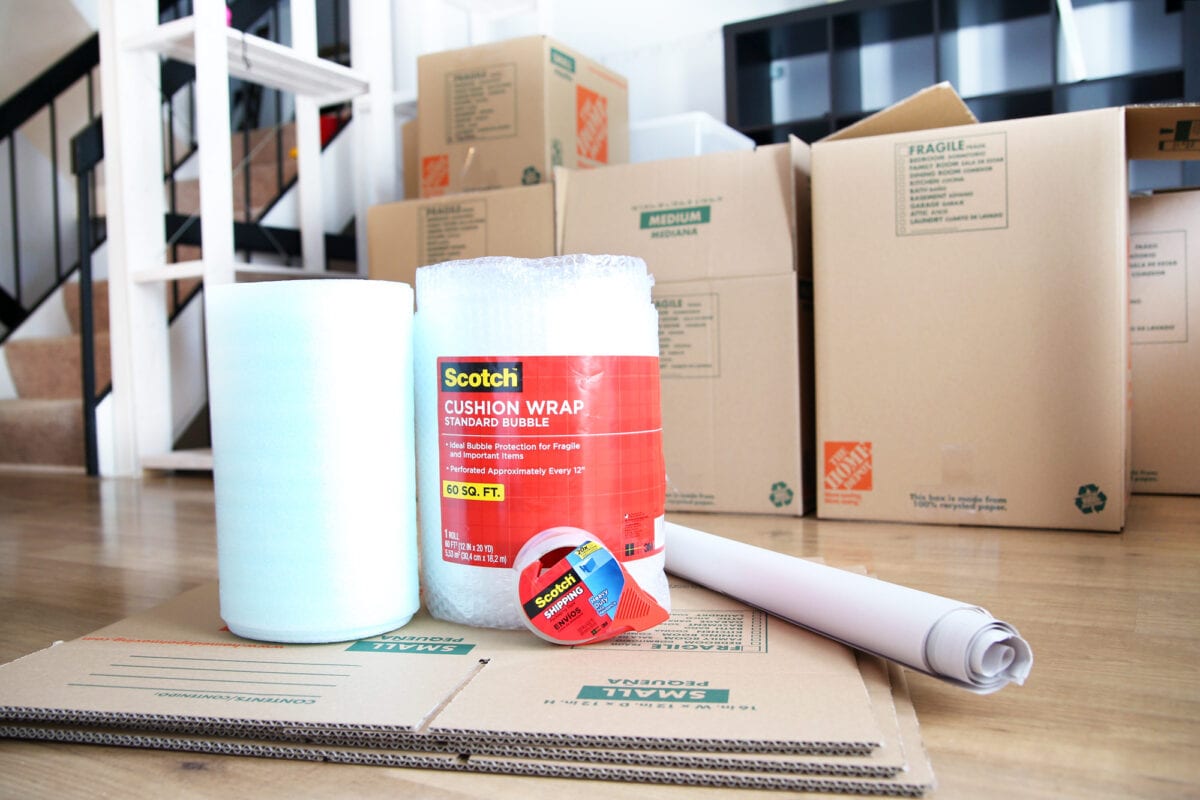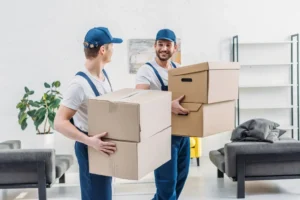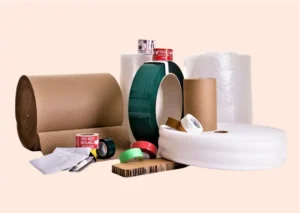Table of Contents

When it comes to getting your products from point A to point B, the stakes are high. The last thing you want is for your items to arrive damaged, disappointing customers and hurting your reputation. That’s where protective packaging comes into play. It’s not just about throwing things in a box; it’s about making sure they arrive in the same condition they left. And that takes knowledge, the right materials, and a bit of finesse.
Article-at-a-Glance: Ensuring Product Safety with the Right Protective Packaging
-
Understand why protective packaging is crucial for product safety during transit.
-
Discover how to select the most effective protective packaging materials for different products.
-
Explore the most protective options for fragile and sensitive items.
-
Learn about industry-specific packaging solutions that ensure the integrity of goods.
-
Gain insight into best practices for applying protective packaging.
Why Protective Packaging Matters for Your Products
Imagine you’ve ordered a new phone online. You’re excited, tracking the package every day. But when it arrives, you find the screen cracked. Frustrating, right? That’s a clear example of why protective packaging is essential. It’s not just about avoiding breakage; it’s about trust. When a product arrives in perfect condition, it tells customers that you care about their experience.
Most importantly, protective packaging is a shield. It defends against the bumps and jostles of shipping, the changes in pressure and temperature, and even the curious hands that might handle your package along the way.
Reducing Product Damage During Shipping
Did you know that the majority of product damage happens during transit? Whether it’s a long haul across the country or a short trip across town, the journey is filled with potential perils. That’s why choosing the right protective packaging materials is a must. It’s about more than bubble wrap or packing peanuts; it’s about understanding the science of shipping and the art of protection.
Enhancing Customer Satisfaction and Brand Image
When customers receive their purchases in perfect condition, they’re happy. And happy customers are repeat customers. They’re also the ones who leave glowing reviews and recommend your products to friends and family. In other words, the right protective packaging doesn’t just protect your products; it protects your brand.
Choosing the Right Protective Packaging Materials
Now, let’s talk materials. There’s a world of options out there, and the best choice depends on what you’re shipping. You’ve got cardboard, foam, bubble wrap, and more. Each has its own strengths, and sometimes the best approach is a combination of materials.
But how do you decide? Well, you’ve got to consider a few things. The weight and fragility of your product are big ones. So is the distance it needs to travel. And don’t forget about the climate it’ll be passing through. Heat, cold, humidity – they can all wreak havoc if you’re not prepared. For more detailed strategies on ensuring the safety of your items during a move, consider reading this ultimate guide to compare moving company prices & save.
Assessing Material Durability and Cushioning Properties
Think about durability first. Will the material hold up under stress? Can it take a hit, or will it crumble under pressure? And then there’s cushioning. You want something that can absorb the shocks and vibrations of the road. That’s especially important for fragile items that might crack, bend, or break.
But it’s not just about what’s inside the box. You also need to think about the box itself. A sturdy outer shell is your first line of defense. And the fit matters, too. Too tight and you risk crushing your product; too loose and it’s bouncing around like a pinball.
Considering Sustainable Packaging Options
Besides that, there’s the environment to think about. Sustainability isn’t just a buzzword; it’s a responsibility. Fortunately, there are plenty of eco-friendly packaging options that don’t skimp on protection. Recycled materials, biodegradable packing peanuts, even plant-based plastics – they’re all part of the green revolution in packaging.
Choosing the right protective packaging is a big deal. It’s about making sure your products – and your reputation – arrive in one piece. So take the time to do it right. Because in the end, the best protective packaging is the kind you don’t have to think about. It just works, every time.
Considering Sustainable Packaging Options
Now, let’s pivot to sustainability. It’s not just about getting your product to its destination safely; it’s also about how the packaging impacts our planet. Sustainable packaging is gaining traction, and for good reason. It can be just as robust as traditional materials, but with a much lighter environmental footprint. Think about using recycled cardboard boxes, biodegradable air pillows, or even cornstarch-based materials. These options are not only better for the environment, but they also send a message to your customers that you’re a brand that cares about the future.

What Is the Most Protective Packaging?
The most protective packaging is the one that’s tailored to the item it’s securing. For instance, electronics require anti-static materials, while delicate ceramics might need thick, molded foam. The key is to match the packaging to the product’s specific needs. That could mean double-walled boxes for heavy items, or it could mean a simple padded envelope for a small, sturdy object. And remember, the best packaging is the one you don’t notice because it just does its job without fuss.
Comparing Material Effectiveness for Fragile Items
When it comes to fragile items, not all packaging is created equal. For those looking to ensure the utmost protection, consider exploring top electronic packaging materials for maximum durability and protection strategies.
-
Bubble wrap: Great for items that need to withstand some impact.
-
Foam inserts: Perfect for snugly securing items in place.
-
Corrugated cardboard: Offers excellent crush resistance for outer packaging.
Each material has its place, and often, a combination is the best approach. A layer of bubble wrap, followed by a snugly fitting foam insert, all encased in a sturdy cardboard box, can be the difference between a product arriving in pieces or in pristine condition.
|
Type of Protective Packaging |
Suitable Products |
Benefits |
Challenges |
|---|---|---|---|
|
Packing Peanuts (Loose Fill) |
Fragile, irregularly shaped items like glass, metals |
Lightweight, affordable, resistant to moisture |
Attracts static, non-biodegradable (usually made from Styrofoam) |
|
Bubble Wrap |
Electronics, glass, china |
Flexible, durable cushioning material |
Not biodegradable, may not provide sufficient protection for heavy items |
|
Packing Foam |
China, glass, electronics |
Customizable, provides excellent protection from shocks and temperature changes |
Bulkier and more expensive than Styrofoam products, not easily recyclable |
|
Glass Packaging |
Sauces, jams, beverages |
Premium look and feel, recyclable |
Fragile and heavy |
|
Metal Packaging |
Canned goods, beverages |
Durable, provides excellent barrier against light and moisture |
Heavy and prone to corrosion |
|
Wood Packaging |
Specialty products, artisanal foods |
Biodegradable, eco-friendly |
Susceptible to moisture and pests |
|
Paper and Cardboard Packaging |
Various food products |
Biodegradable, lightweight, cost-effective |
Compromised by moisture |
These materials cater to different products based on their fragility, shape, weight, and other specific requirements. By selecting the appropriate protective packaging type for each product category, businesses can ensure safe transportation and delivery while minimizing damage risks.
Latest Innovations in Protective Packaging Technology
The world of protective packaging is always advancing, with new materials and designs constantly emerging. One of the latest trends is the use of smart packaging—packaging that can sense and report conditions like temperature and humidity, or even whether the package has been opened before delivery. These innovations not only protect the physical integrity of the product but also provide valuable data to help improve the entire supply chain.
Protective Packaging Solutions for Various Industries
Different industries have different needs. The packaging that works for a smartphone won’t be the same as what’s needed for a frozen pizza. It’s all about understanding the unique challenges of your product and industry.
Customized Strategies for Electronics and Glassware
For electronics, static electricity is the enemy, so anti-static bags are a must. And for something as delicate as glassware, foam that molds to the shape of the item can provide unparalleled protection. But remember, it’s not just about protection during shipping. Packaging also needs to withstand the unboxing process, so it’s important to strike a balance between security and ease of opening.
Best Practices in Protective Packaging Application
Applying protective packaging effectively is an art form. It’s not just about the materials; it’s about how you use them. The goal is to immobilize the product, keeping it from shifting during transport, which could lead to damage.
Effective Techniques for Minimizing Movement Inside the Box
To minimize movement, start by selecting a box that’s just the right size—not too big and not too small. Fill any voids with materials like air pillows or packing paper. And don’t forget to seal the package with strong, reliable tape. It’s these little details that can make a big difference in ensuring your product arrives safely.
Remember, the right protective packaging is out there. You just need to know where to look and what to consider. And if you’re not sure, or you need some expert advice, don’t hesitate to Contact Us. We’re here to help you find the perfect packaging solution for your products.
Optimizing Packing Procedures for Efficiency and Cost-Effectiveness
Efficiency and cost-effectiveness are key when it comes to packing. You want to make sure you’re using just the right amount of material—not too much, not too little. It’s like Goldilocks and the three bears; you need to find the option that’s just right. By doing so, you’ll save on materials and reduce shipping costs, all while ensuring your products are snug and secure.
Start by analyzing the size and shape of your products. Use packaging that conforms to their dimensions as closely as possible without squeezing them too tightly. Implementing a standardized packing process can help ensure consistency, reduce waste, and speed up the packing process. And don’t forget to train your staff on these best practices. The right technique can make all the difference.
Frequently Asked Questions
Got questions about protective packaging? You’re not alone. Here are some of the most common queries I hear, along with clear, straightforward answers. Remember, the goal is to make sure you’re as informed as possible so you can make the best choices for your products and customers.
How does protective packaging contribute to sustainability?
Protective packaging and sustainability can go hand-in-hand. By choosing materials that are recyclable or made from renewable resources, you’re reducing the environmental impact. For example, corrugated bubble wrap is made from recycled cardboard and is 100% recyclable. Using less material overall also helps, as does selecting packaging that consumers can easily recycle or compost.
What types of products require specialized protective packaging?
Many products benefit from specialized protective packaging, especially those that are fragile, valuable, or sensitive to environmental factors. Electronics often need anti-static packaging, while perishable goods might require insulated boxes with cold packs. Artwork, meanwhile, might need sturdy crates with cushioning that can withstand a drop or a knock.
Can I customize protective packaging materials to fit brand requirements?
Yes, you can absolutely customize protective packaging to fit your brand. This can range from printed boxes that showcase your logo and brand colors, to custom-shaped foam inserts that cradle your product perfectly. Custom packaging not only provides protection but also enhances the unboxing experience for your customers, reinforcing your brand identity.
Customization doesn’t have to break the bank, either. Many suppliers offer digital printing which allows for small runs without the high setup costs of traditional printing methods. And as your business grows, you can scale up your custom packaging to keep pace with demand.
Is it possible to balance cost and protection in packaging?
Definitely. It’s all about finding the sweet spot where you’re using enough packaging to protect your products without going overboard. Consider the actual needs of the product and the risks it faces during shipping. Sometimes a simple solution, like a corrugated mailer with a locking tab, is enough. Other times, you might need layers of foam and bubble wrap. It’s about making smart choices, not necessarily more expensive ones. For more insights, check out our budget moving guide for affordable packaging strategies.
Don’t forget to factor in the cost of damaged goods and returns. Investing a little more in protective packaging upfront can save you a lot in the long run. It’s not just about the cost of the packaging; it’s about the total cost of getting your product safely to your customer.
How do I determine the right amount of protective packaging to use?
There’s no one-size-fits-all answer, but here’s a good rule of thumb: use enough to protect the product from the most common shipping hazards, like drops, compression, and vibration. Do some testing—ship a few packages to yourself to see how they hold up. And listen to customer feedback. If you’re getting reports of damaged items, it’s time to reassess your packaging.
Also, consider the value of the item. High-value items might warrant extra protection, not just for safety but for the customer’s peace of mind. And always stay up to date on best practices and new materials. The world of protective packaging is always evolving, and there might be new solutions that can save you time and money.



